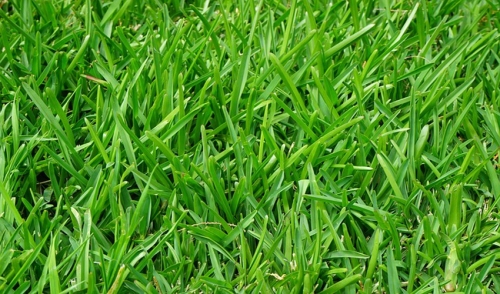
Fertilizing Your Lawn brought to you by the Scotts Company
There are four major considerations in selecting a lawn fertilizer.
1. The Analysis
2. The Nitrogen Release Rate
3. Granule Content
4. Results
How to Select a Lawn Fertilizer
1. The Analysis
This indicates the percentage (by weight) of the three major nutrients in a fertilizer: nitrogen, phosphorus, and potassium. The analysis is printed on the front of every fertilizer package, as shown here. It tells nothing, however, about the way the fertilizer will perform. Two fertilizers with the same analysis can produce dramatically different results.
29
First number is
NITROGEN (N) 3
Second number is
PHOSPHORUS (P) 4
Third number is
POTASSIUM (K) Nitrogen makes grass plants grow and become greener. Phosphorus stimulates root and seedling development. Potassium promotes disease and drought tolerance.
2. The Nitrogen Release Rate
How fast the nitrogen is released determines not only how fast the grass will green up, but also how much it will grow, how heavy the clippings will be, how much will be wasted by leaching and "runoff", and how long the results will last.
Lawn grasses require a steady, controlled feeding to produce a thick, green lawn.
Scotts patented, controlled-release fertilizers deliver just enough quick-release nitrogen to produce a fast greening, while the balance is released gradually, by microbial action in the soil, over a period of approximately eight weeks. As a result, the lawn is fed continuously, so there is a constant supply of nitrogen for the grass plants.
There are other fertilizers on the market which make "slow-release" claims. These are primarily fertilizers using various "coated particle" technologies, which coat the nitrogen with sulfur or other material. The nitrogen is then released as the coating dissolves. These products can never produce the programmed nutrient release of Scotts' patented fertilizer processes.
3. Granule Content
Most fertilizers supply the three basic nutrients (nitrogen, phosphorus, and potassium) in separate granules which are of different sizes and shapes. Scotts' patented All-In-One Particle™ technology combines the proper ratio of timed-release nitrogen, phosphorus and potassium into every particle, so each grass plant gets exactly what it needs to thrive, and every inch of the lawn is fed exactly the same. Scotts granules give better coverage during spreading with more particles per square inch than ordinary brands. Better coverage means a consistent, even feeding for excellent results.
Typical "simple-mix" Fertilizers Scotts Fertilizers with All-In-One Particle™ Technology Nutrients are in separate granules, of different sizes and shapes, which can cause uneven feeding. Each granule is of consistent size and is homogenous in make up, containing N, P, and K in the proper proportion, to deliver consistently good results.
4. Results
The most important of all the ways to compare fertilizers. To see for yourself, try this test on your own lawn. Spread Scotts Turf Builder on half of your lawn. Use any other fertilizer on the other half, and witness for yourself the amazing difference in results.
How Often to Fertilize?
It depends on how good a lawn you want. For northern lawns, one feeding in spring and another in fall is minimum. An attractive, thick, green lawn can be kept throughout the year with an Annual Program of four or five feedings, starting in early spring and repeated every two months, provided the right kind of fertilizer is used. For southern and western warm-climate lawns, the recommendation depends on the type of grass you have.
The Scotts Advantage Because of Scotts Patented Particle Technology, Scotts fertilizers provide these benefits:
Information and images courtesy of Scotts lawn care.

